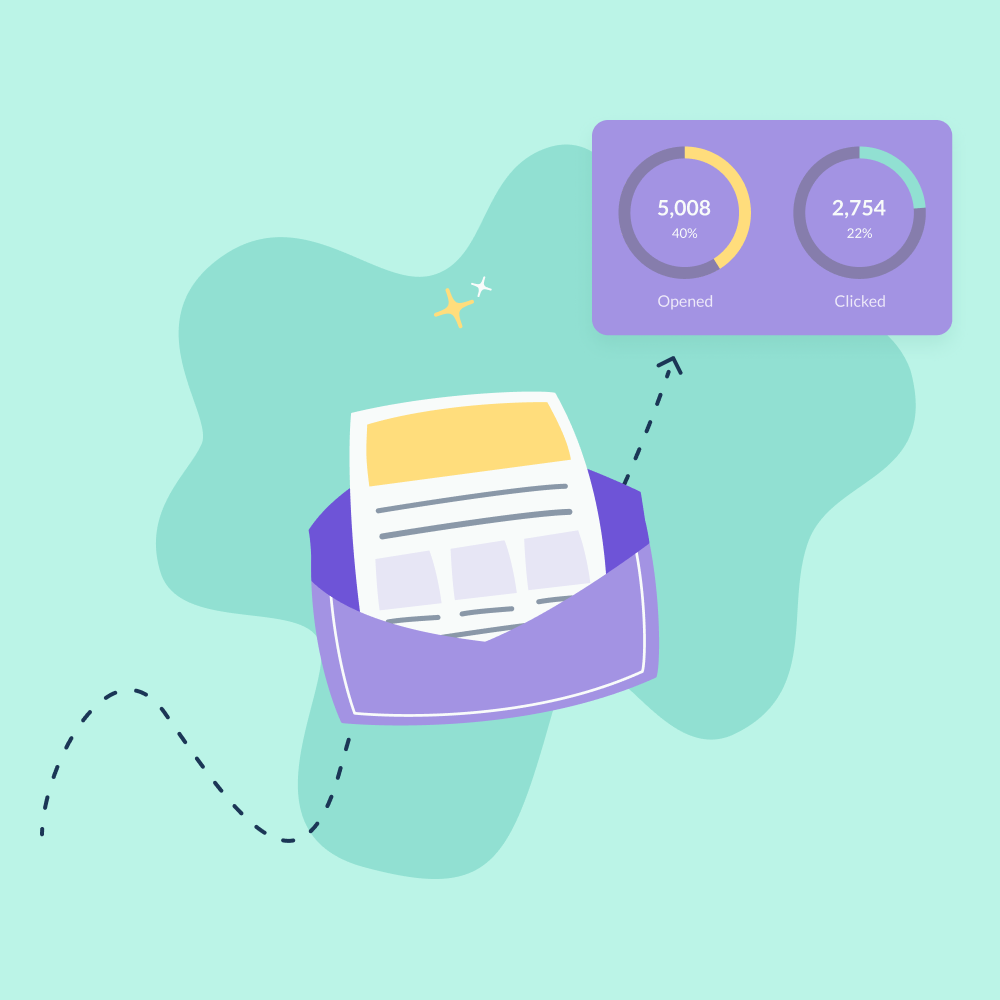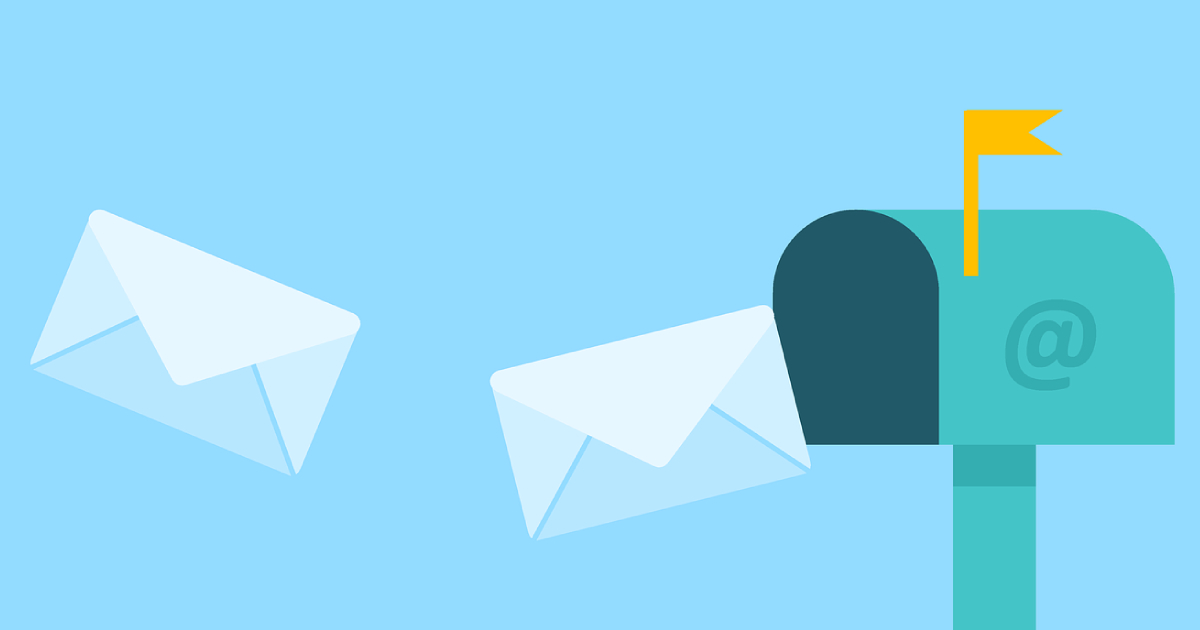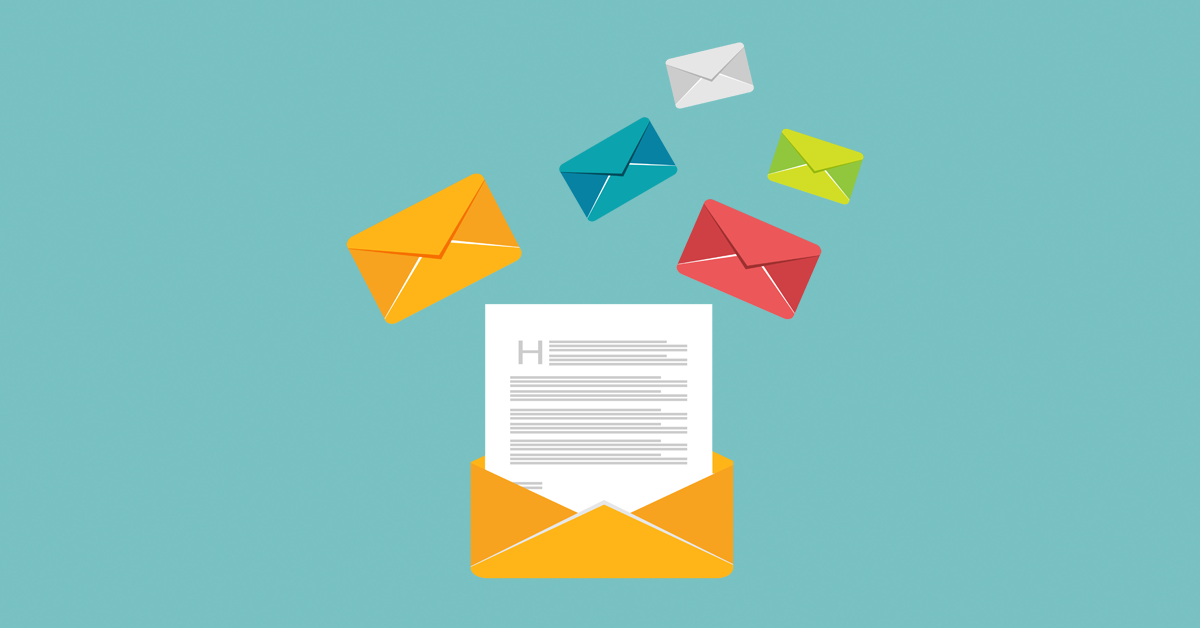As marketers, we are always looking for effective ways to attract, keep, and convert the attention of our target audience. The usual strategy is to identify your client’s pain points, hit them with your product’s best features, and try to lure them to use your product by offering discounts and sales.
This strategy will work fine to get prospects into your sales cycle. But if you want them to make that first purchase and eventually become loyal customers, you need to build relationships. This is where storytelling comes into play.
Storytelling allows marketers to motivate and persuade their audience to take action while building meaningful relationships with them.
And, just like every other marketing channel, fostering trust is equally as important in email marketing. By using stories to foster trust and build a connection with readers, subscribers will anticipate your emails. This will lead to increased open rates, click-through rates, and conversion rates.
So in this article, we will look at how you can use storytelling in email marketing. And we’ll also see copywriting formulas that will help you write compelling stories.
Let’s get started.
Page Contents
What is storytelling in marketing?
Storytelling in marketing is the use of a narrative to connect your brand or product to customers. It aims to evoke an emotional response from customers and motivate them to take a specific action. Some stories are true, and some are fabricated to better explain the marketing message.
Stories can be told using text, videos, pictures, or verbally via podcasts. No matter what form is used, telling stories is a universal act and it’s found in every culture and language.
With storytelling, marketers can create content and advertising that is memorable and resonates with their customers.
Why is storytelling used in marketing?
The competition for the attention of customers is more difficult than ever. This means that marketers need to find creative ways to present their messages to show customers how their products or services can add value to their lives. And one of the most effective ways of doing this is through the use of storytelling.
Storytelling has been proven to boost a product’s value up to 20 times.
Significant Objects was an experiment created by Rob Walker and Joshua Glenn to demonstrate how adding a short story to the description of a product can increase its value.
In the experiment, the researchers auctioned off thrift-store objects on eBay. For the description of each object, they featured short stories written by over 200 contributing writers. Each of the objects in the auction cost an average of $1.25. But by adding stories to the item description, they were able to sell the objects for nearly $8,000 in total, which is an average of almost $40 per item
For example, this object had an original price of $0 but was auctioned for $80.

Here is the story that was attached to the auction:

This example shows why storytelling is important in marketing. Compelling stories can provide customers with a new perspective on your product or brand. A customer who is on the fence can change their mind after reading a story that stirs up their emotions or that they can relate to.
To better understand why storytelling is used in marketing, let’s see some of the benefits.
Benefits of storytelling in marketing
Why should you choose to tell stories instead of using a data-driven slideshow or email? And what are the benefits of using stories to introduce your brand or sell products?
Let’s find out.
Storytelling engages consumers
“Marketing is no longer about the stuff that you make, but about the stories you tell” – Seth Godin
Consumers are inundated with ads daily. Due to aggressive advertising from brands and marketers, customers are intentionally ignoring advertising. A survey from Goo Technologies shows that 82 percent of Americans ignore ads. Another 48 percent go as far as blocking ads.
Stories on the other hand are great for grabbing the consumer’s fleeting attention. If your story is compelling and can spark the emotion of customers, you will be able to influence them to engage with you. According to research from Headstream, if people love a brand story, 55 percent of them are more likely to buy the brand’s product, 44 percent will share the story, and 15 percent will immediately buy the product.
These stats show that when customers feel a connection to your content whether it is via an email, article, or ad, they will most likely take the desired action.
Storytelling makes your content memorable
Research suggests that we are 22 times more likely to remember a fact when it is delivered with a story. Why? Because stories are memorable.
Stories act as mnemonics devices for facts.
A mnemonic is a tool that makes it easy to remember facts or large amounts of information. They can come in the form of an acronym, song, image, rhyme, or story.
Abstract data like “we increased revenue by 45 percent” can be easy to forget. But when the data is wrapped up in a story on how the revenue was increased, the data becomes memorable and real.
Your annual report might not be the next best-selling novel, but if you wrap the report in short narratives detailing the efforts that led to your successes (or failures), your audience (investors or customers) will find the report more interesting to read.
Just data alone can be boring and easy to forget. But when you add a story, your audience will more likely remember what you said.
Storytelling humanises your brand
Studies show that 57 percent of consumers want human-like communication from brands. And by sharing more stories about your brand and employees, you make it easy for consumers to know who you are and also trust you.
To humanize your brand is to make your brand feel like a friend that your customers have known for a long time. Your goal should be to create a relatable brand that customers can have an emotional connection to. And stories can help brands achieve this. With stories, you can help your customers better understand your brand; what you do, who you do it for, how you do it, and what the future of your brands looks like.
Humanising your brand allows you to have a deeper connection with your audience and creates room for more engaging conversation.
Examples of storytelling in email marketing
So far, we have seen why storytelling is used in marketing. We have also seen the benefits brands will gain from incorporating storytelling in their marketing campaigns.
Now let’s see examples of how you can use stories in your email marketing.
Origin stories
You can use origin stories to welcome new subscribers to your newsletter. This type of story tells subscribers about how the company came to be. It can include details of when the company was started, what inspired the founder’s decision to start the business, milestones achieved, etc.
Nerd Fitness, for example, dedicates their welcome email to a story from their founder Steve Kamb. In the email, he talks about his motivation for starting the Nerd Fitness community and their growth so far.

Brook Brothers, in turn, used a story timeline to celebrate the company’s 100-year anniversary. In the email, Brook Brothers tell subscribers how their brand was created and also share the iconic innovations they’ve brought to the industry in the past 100 years.

Product launches
You can also use stories during product launches. Use stories to talk about what inspired you to create the products. State why your products are unique. To make your story more impactful, use case studies and user-generated content to offer a narrative on the experience the customers can expect to gain from using your product or service.
For example, when Kate Spade was launching their new collection, the brand told the story of why they used chilli peppers as the inspiration behind the campaign.

Success stories
Including success stories in your emails allows you to paint a picture of the benefits of working with your business.
Instead of just telling your audience about your service or product , use stories to give a narrative on how your product works in real life. Use the stories to show how your customers were able to solve a problem using your products and the exact way they achieved it.
Note that success stories are not the same thing as including testimonials in emails.
Testimonials are typically bite-sized statements from customers that describe how your product or service helped them. Success stories, on the other hand, are stand-alone pieces of content that take your readers on the journey an existing customer went through.
In this example, course creator Nesha Woolery uses an email to spotlight how one of her students used her online course to achieve work/life balance.


Neesha shows that you can also tell stories using audio. She used the email to introduce the story then redirected her readers to her podcast where they can listen to the full success story.
Interview stories
Not every email you send has to be a promotional email. You can also send emails to subscribers with the sole purpose of engaging them. An interview-style email is a great way to build trust with your readers and encourage engagement. You can interview your CEO, employees, customers, and other people connected to your brand.
For example, Chubbies uses storytelling in the form of an interview to unveil their new models. In the interview, the models speak about how they joined the modelling contest and how becoming models for Chubbies improved their lives.

When you do want to send out a promotional email, you can still use stories to make the email more engaging and interesting. For instance, instead of sending out a standard promotional product launch email, Chubbies shared a screenshot of a text chat between two employees talking about the new products. This is an example of how to creatively use storytelling in emails.

Behind the scenes stories
This kind of story is great for showing your audience how things work behind the curtains of your business. You can use this type of story to show how products are made, how your team works, or some other interesting detail about your company.
Sharing behind the scenes content gives your brand a chance to connect with your audience on a personal level. It also makes your brand more approachable and relatable.
In the promotional email for their upcoming Avigator Multi-Scale watch, Jack Mason showed their audience the behind-the-scenes of how the watch was designed.

In this second example, MeUndies shows how their products are created – starting from how they harvest the pulp used to create the fibres to how they weave the waistband.

Nonprofit storytelling
Using storytelling in your nonprofit emails can be a powerful tool to motivate donors. A good story encourages readers to form genuine emotional connections with the people affected by the problem the nonprofit is trying to solve.
In this example, Kampgrounds of America use video storytelling in their email to show how donations are helping transform the lives of children with cancer, and their families. Under “See the Impact”, donors can watch a video about the experience of children in KOA care camps.

5 copywriting formulas for effective storytelling
For your stories to motivate, inspire, persuade, or move your readers to act a certain way, you need to write highly engaging copy.
This is where copywriting formulas come into play.
Formulas are systems that you can use whenever you want to create an engaging copy, but not from scratch.
If you use tested and proven formulas, writing compelling stories becomes easy. Here are some of the most popular to get you started.
1. AIDA
This copywriting formula stands for Attention – Interest – Desire – Action.
Attention – The beginning parts of your story must grab the attention of the reader. Do not leave the best part for last. Instead, use the best part to draw the reader in.
Interest – After grabbing the reader’s attention, build up their interest by offering interesting, unusual, or fresh information.
Desire – Now that the reader’s interest is piqued, use the story to create desire so that they will want what you are offering. Desire can be built by showing proof that your product or service does what you say that it does.
Action – This is where you add your call-to-action.
AIDA is one of the most common copywriting formulas and can be used to create different forms of marketing copy, from stories to direct email and landing pages.
2. PAS
This copywriting formula stands for Problem – Agitate – Solution.
The formula is great when using the experience of customers to tell a story.
Problem – In the story, first identify the problem that the customer was facing.
Agitate – Don’t just stop there. Emphasise the problem harder and go even deeper.
What do you think the audience will feel when reading this story?
They will want to know if there is a solution that can fix this problem. And that’s what you will do in the next step.
Solution – Here you will show how the customer was able to solve their problem using your product or service. At this point, the reader is already emotionally invested. And if they are having a similar problem, they are most likely going to opt for your solution.
3. The 4Ps
This formula stands for Picture – Promise – Prove – Push.
Picture – Start your story by describing a scene that the reader can see themselves in. When readers feel a connection to the character or events in a story, they are more likely to continue reading. You can use the story to paint a picture about a pain point or a positive aspirational future the reader can experience.
Promise – Describe how your product or service will end that painful situation or make that positive aspirational future come to life.
Prove – Support your promise by showing proof that your solution really works.
Push – Ask the reader to take action.
The formula works because it shows the reader a picture of a favourable outcome. The 4Ps describe how a product or service can help and then provides proof of how it does it.
4. Sonia Simone’s formula
Copyblogger cofounder Sonia Simone created a formula for writing a great marketing story.
The formula contains five components:
Your story needs a hero – To make your marketing story compelling, your customer must be the hero.
Your story must have a goal – The story must detail the goals that the customer has. For example, the pain point the customer wants to solve.
Your story needs to have conflict – Obstacles are what makes your story compelling. Show the obstacles that the customer faced on the way before reaching victory.
Your story needs a mentor – If your customer is the hero, then your business becomes the mentor. Your business is there to guide the customer on their journey to victory.
Your story must have a moral – At the end of the story, spell out what the reader should do next.
5. Star – Story – Solution formula
In this formula, your story must have a:
Star – The main character of your story.
Story – The story itself. Here you can talk about the main character’s pain points.
Solution – Finally, you will explain how the character wins in the end.
You don’t have to follow this formula linearly. You can start by telling the Story before moving on to introduce your Star. Also, your star can be an existing customer, your product/service, or even the reader.
Types of emails where storytelling works best
If you want to use storytelling in your email marketing, here are the four types of emails where it works best.
1. Welcome emails
Your welcome email is the first impression your brand makes on new subscribers. It’s important that you grab their attention and encourage them to engage with your content. A good welcome story – for instance, a story on how your founder started your company – is a great way to introduce yourself. This story will also make your brand more memorable.
For example, AWAY uses the introductory section of their welcome email to talk about their brand. They then go on to give a narrative on why their product is unique.

2. Promotional emails
Stories are great for promoting product launches or events.
Let’s say a nonprofit wants to send out an email asking subscribers for donations. Except for dedicated subscribers who are already strong supporters of the organization, it might be difficult to get subscribers to donate right away.
Instead, frame your email to tell a story about your organization’s mission. Share a true story about how your nonprofit’s work has created a big impact on society. Stories about your cause provide an emotional connection with the reader that keeps them interested. When people are emotionally connected to a cause, they are more likely to take action and donate.
This also goes for emails promoting your products. You can tell the story of how a customer solved their problem using your product. Storytelling can improve sales by warming up audiences before the promo email.
This email from the Canadian Red Cross shows how to use storytelling to promote a non-profit. The Canadian Red Cross helps the readers emotionally connect with their mission by sharing the stories of Syrian refugees their non-profit assists.

3. Lead nurturing emails
This kind of email is used to guide leads through your sales funnel until they are converted into customers. And to convert a lead that is not yet ready to buy, you need to build their trust first. This is achievable through storytelling.
Customer success stories are great for nurturing leads. They allow you to show off the performance of your product or service with real-life examples. When leads can see that your product works, they will trust you more. And you need this trust to convert them into loyal customers.
4. Milestone emails
You can use storytelling in milestone emails in two ways.
First, it can be a milestone demonstrating how far your brand has come. For instance, if your brand is celebrating 1 million subscribers, you can tell the story of the hurdles your brand faced to get there.
Secondly, your customer might have achieved a milestone during their interaction with your brand. As they go through different stages in their journey with your brand, use stories to highlight and celebrate these moments.
In one of their emails, Uber uses a real story to celebrate the heroism of one of their drivers. They also involve the readers by encouraging them to leave feedback on their drivers on their next trip with Uber.

Wrapping up
Incorporating storytelling in your email marketing content can significantly improve the performance of your campaigns. By creating compelling stories, you can connect with your subscribers in a way that traditional emails will not do.
Storytelling will make your emails memorable, build trust with your audience, and drive them to take the desired action. The key is to use the copywriting formulas above to make sure that your stories stand out in the subscriber’s inbox.





No Comments
Leave a comment Cancel